Exploring Motion Sculpture: Art Meets Kinetics
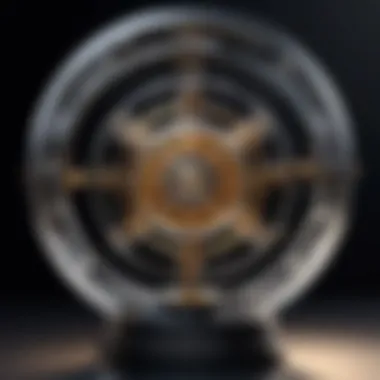
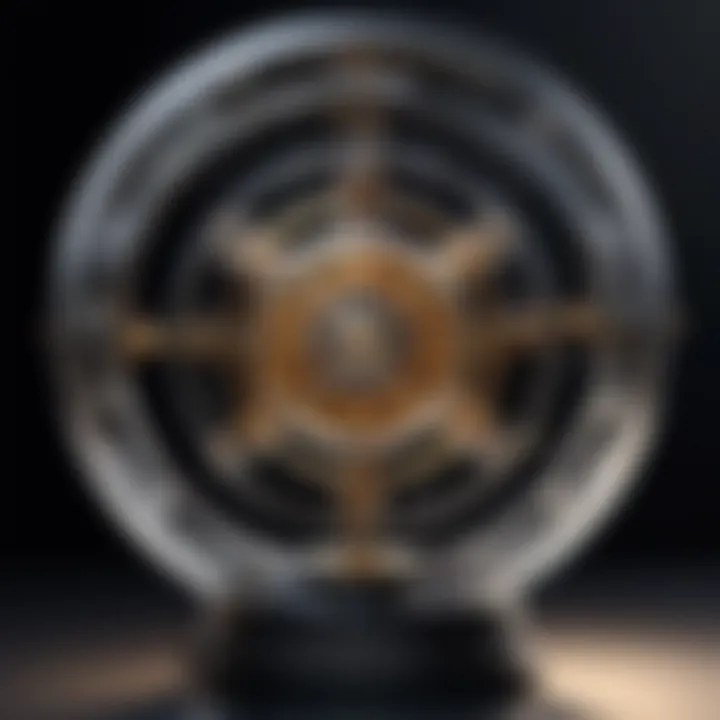
Intro
Motion sculpture is an enthralling blend of art and engineering that grabs the imagination and plays with the senses. Oftentimes, it is mistaken for simply static art—something to admire but not interact with. However, at its core, motion sculpture elevates the viewer’s experience by interweaving movement into the artistry, making every piece a dynamic narrative rather than an immovable statement.
As we delve into this captivating domain, we’ll explore various elements that define it—its historical fabric, the techniques employed by artists, and the pivotal role that technological advancements play in shaping its future. Each section offers a new layer of understanding, guiding us through the aesthetic significance of motion sculpture and highlighting its dialogue with creativity and mechanics.
This underscore the importance of recognizing motion sculpture not only as an art form but ehther as a form of innovative expression that challenges traditional boundaries. Let's begin our journey by examining the intersection where art meets technology, as it's here that we can see the future unfolding, revealing the untapped potential that lies ahead.
Preamble to Motion Sculpture
The world of motion sculpture stands as an electrifying tableau where art intertwines with movement. This art form isn't merely about static visuals; it's a dance of technology, creativity, and viewer interaction. The integration of kinetic components into sculpture offers not just aesthetic pleasure but also invites both emotional and intellectual engagement. Understanding motion sculpture allows us to appreciate how art evolves alongside technological advancements, reflecting our ever-shifting perspectives on both creation and interaction in our contemporary landscape.
Definition and Characteristics
Motion sculpture can be defined simply as three-dimensional artworks that incorporate movement, either through mechanical elements or viewer interactions. Unlike traditional sculpture, which stays firm and unyielding, motion sculptures concoct a sense of dynamism, enthralling the observer. These pieces often feature:
- Kinetic Mechanisms: Utilizing gears, motors, or even natural forces like wind and water, these sculptures bring a physical dimension to the artistic expression.
- Interactivity: Some motion sculptures invite viewer participation. The observer’s actions can influence the movement or shape of the artwork, adding layers of experience and personalization.
- Materiality: Artists might use a blend of traditional and contemporary materials, like metals, plastics, or recyclable elements, creating contrast between the technological aspect and the organic thoughts behind art.
In this sense, motion sculptures encapsulate the transition of viewer from observer to participant, bridging a gap that static art forms often create.
Historical Overview
To understand where motion sculpture stands today, we must travel back in time. The roots of kinetic art can be traced to the early 20th century with the likes of Naum Gabo, who began experimenting with transparency and movement. Movements like Futurism and Dadaism laid groundwork for a world where motion in art was not just possible but celebrated.
In the 1960s, artists like Alexander Calder revolutionized the genre with his mobiles, showcasing how air currents could dictate art. Later, pioneering artists like Jean Tinguely embraced mechanical motion in more grandiose ways, creating sculptures that went beyond traditional boundaries.
The historical journey of motion sculpture not only reflects changes in artistic techniques but also shifts in societal attitudes towards art and technology. Each artist, through their innovations, marked a significant step in redefining art as something that explodes with life, rather than being a mere representation of the stillness.
The Evolution of Sculpture
The journey of sculpture has been a fascinating tale of transformation, evolving from static representations to highly dynamic forms that blur the lines between art and mechanics. This evolution is not just about changes in physical structure; it's also about the ideas that underpin the creative processes behind these artworks. Understanding these changes is essential in appreciating the significance of motion sculpture in the contemporary art scene.
By putting the spotlight on this evolution, we uncover how each phase reflects the spirit of its time, contributing to the ongoing conversation about what art can be. Each twist and turn in this tale of transformation reveals a broad spectrum of artistic expression, innovation, and societal interests.
From Static to Dynamic Forms
Historically, sculpture has been rooted in a firm stance, immobile and fixed, thus allowing observers to appreciate the meticulous craft and details honed by the artist's hands. Ancient statues, such as those from Ancient Greece, served a purpose—symbolizing power, faith, or beauty—with their resolute stillness. This traditional form, anchored in representation, began to sway with the advent of modernism in the late 19th and early 20th centuries.
As artists sought to explore new frontiers, they began to question the very nature of sculpture. The change towards dynamic forms, incorporating movement, became a reflection of the age's industrial advancements and artistic explorations. With innovators like Marcel Duchamp and his "Bicycle Wheel," a shift in thinking was beckoned. Motion became an essential component, moving beyond the artist's brush to include real kinetic energy.
Dynamic sculptures now take many shapes, playing with gravity, mechanics, and human interaction. For example, artists such as Alexander Calder introduced moving elements within their work, allowing viewers to not just observe but engage with the piece in an active manner. The importance of this shift cannot be understated: it suggests that art is more than just an object. In its evolutionary phase, it becomes a verb, inviting dialogue and interaction.
Influential Movements in Sculpture
Several art movements have significantly influenced the evolution of sculpture towards that dynamic identity. One major force was Constructivism, a movement that emerged in early 20th-century Russia, pushing for art to be utilitarian yet innovative. Artists of this movement embraced modern materials like Metal and plastic, often incorporating movement as a way to engage with the audience on deeper levels.
In a similar vein, Cubism also plays a role. Artists such as Pablo Picasso and Georges Braque deconstructed objects to reveal their multi-faceted forms, suggesting movement and depth even in stillness. This abstraction led to later artists experimenting with form and dynamics in ways that were previously unimaginable.
Another influential force is kinetic art, a term that specifically relates to artworks with moving parts, which gained prominence in the mid-20th century. Artists like Jean Tinguely brought mechanical movement to the forefront, transforming sculpture into an event.
More recent movements, including New Media Art, continue to fuse technology with sculpture, utilizing sensors and data to create interactive experiences. With developments in robotics and digital fabrication, a new chapter in the evolution of sculpture is unfolding, promising a future filled with possibilities.
"Art is a constant movement, reflecting society, technology, and human experience."
Thus, the exploration of dynamic forms in sculpture stands testament to human ingenuity and the ceaseless quest for new modes of expression. As this journey unfolds, it invites us to see not only the physicality of artworks but the stories they tell through movement.
Technical Aspects of Motion Sculpture
The realm of motion sculpture transcends traditional artistic boundaries, integrating technology and mechanics into its very essence. This union creates a complex tapestry, where each element contributes to the overall functionality and aesthetic appeal. Understanding these technical aspects is paramount for grasping how motion sculptures operate and what makes them resonate with audiences. Delving into mechanisms of movement and material selection offers profound insights into this captivating art form.
Mechanisms of Movement
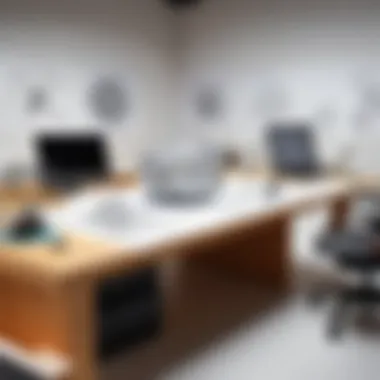
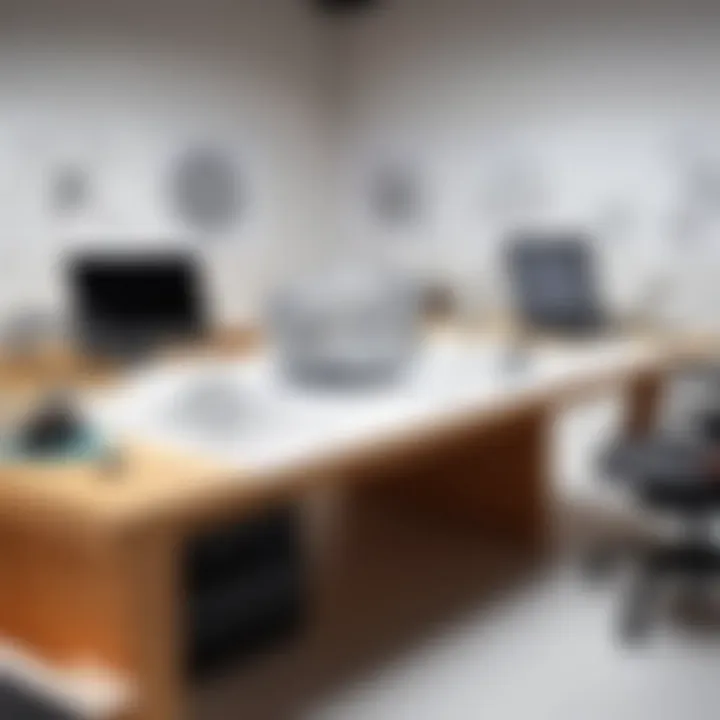
The heart of motion sculpture lies in its movement mechanisms—each designed to breathe life into static forms. From simple wind-up gears to sophisticated motorized components, the choices made here set the stage for the sculpture’s dynamism.
- Kinetic Energy Sources: Many artists capitalize on forces found in nature. Some sculptures harness wind power, utilizing large, lightweight materials that catch the breeze. Others are powered by electric motors, allowing precise control over speed and direction.
- Movement Types: Different motion types can evoke various emotional responses. For instance, a sculpture that spins gently may convey serenity, whereas rapid, erratic movements might instill excitement or anxiety. These choices are instrumental in how viewers experience the piece.
- Embedded Technology: With the advent of robotics and programming, artists can incorporate sensors to create responsive interactions. For example, a motion sculpture might react to the proximity of a viewer, creating a dialogue between the work and the audience. This kind of engagement not only enhances the viewer's experience but invites a greater exploration of the artwork's intention.
Art often becomes a conversation, and through its mechanism of movement, motion sculpture can articulate feelings that are both personal and universal. The intricate dance between artistry and engineering is what sets this genre apart, demanding a nuanced understanding of both.
Material Selection and Its Role
Selecting appropriate materials for motion sculptures is a nuanced task, influencing not just aesthetics but also functionality and durability. The right choice can enrich the viewer's experience and enhance the piece's kinetic qualities.
- Lightweight vs. Heavy Materials: Generally, the weight of materials affects motion dynamics. For sculptures intended to sway or spin, artists often opt for lighter materials like aluminum or plastics. In contrast, installations designed for stability might employ heavier elements such as steel or stone to anchor them firmly in space.
- Aesthetic Value: The chosen medium should also speak to the visual aspects and thematic intentions of the sculpture. Transparent materials can impart a feeling of ethereality, while textured surfaces may invite viewers to engage tactilely with the piece, sparking curiosity.
- Environmental Considerations: In an age of heightened ecological awareness, many artists focus on sustainability, opting for recycled materials or those with lower ecological footprints. This consideration not only fuels the creative process, but also aligns the artwork with contemporary cultural values.
"Art is a thing that lives and reacts. When the artist understands the materials, they find harmony between expression and functionality."
Notable Artists and Their Contributions
The evolution of motion sculpture cannot be truly grasped without appreciating the artists who have poured their vision and ingenuity into this fascinating domain. These artists did not merely dabble in kinetic art; they pushed the boundaries of traditional sculpture, intertwining artistry with intricate mechanics, creating a dialogue of movement that captivates both the eye and the mind. Through their innovative approaches, they have expanded the realm of artistic expression and redefined how we engage with art. Their contributions highlight the significance of technique, concept, and cultural impact in the world of motion sculpture.
Alexander Calder and Kinetic Art
Alexander Calder stands as a towering figure in the landscape of motion sculpture. Known primarily for his whimsical mobiles and stabiles, Calder's work challenged traditional notions of sculpture being mostly static. He mastered the art of balancing forms so that they could sway gently in the breeze or be set into motion by the lightest touch.
His famous mobile "Lobster Trap and Fish Tail" is a prime example; it moves effortlessly, reminding one that movement can be both a physical and emotional phenomenon. Calder's fascination with balance and motion not just influenced his sculptures but also inspired a generation of artists to explore movement as a vital feature of their work.
"The universe is made of stories, not atoms." - Muriel Rukeyser
Calder’s ingenuity drew heavily from the principles of physics, leading to intuitive designs that not only entertained but also engaged viewers in a deeper narrative about nature and life. His impact on modern art is immeasurable, as he laid the groundwork for kinetic art movements.
Theo Jansen and Strandbeests
Theo Jansen's movement into the world of motion sculpture is both groundbreaking and unique. Often referred to as the creator of "Strandbeests", these creations are a blend of art, engineering, and bio-inspired design. Jansen's work mimics the movement of creatures that roam the beach, bringing an organic feel to kinetic art.
Strandbeests are incredible in their ability to walk on wind power alone, operating like living organisms made of PVC pipe. Each structure is a testament to Jansen's engineering prowess, revealing a meticulous attention to detail and a visionary outlook on how art can intersect with nature and mechanics. Jansen has often emphasized his desire to create creatures that can “be free,” which lends a poetic quality to the structural marvel of his work.
Through hands-on experimentation and an unyielding curiosity, he has demonstrated that kinetic art can inspire a sense of wonder and contemplation about life, technology, and evolution. Jansen’s contribution has indeed expanded the horizons of motion sculpture, inviting viewers to engage with and reflect on the relationship between art, science, and the environment.
Other Pioneers of Motion Sculpture
While Calder and Jansen are notable names, the world of motion sculpture boasts a plethora of other groundbreaking artists whose contributions have shaped the discipline.
- Rafael Lozano-Hemmer has carved a niche for himself with interactive installations that often engage viewers through technology, blending architecture with kinetic responses.
- George Rickey, famed for his elegant, geometric sculptures that oscillate in the wind, embodied a subtler approach to motion, emphasizing balance and precision.
- Kara Walker’s narrative-driven work often incorporates motion, as she uses kinetic relationships to deepen the emotional impact of her storytelling.
These artists, among many others, have significantly enriched the field of motion sculpture, swirling mechanical ingenuity with artistic expression. Together, they are redefining the experience of art in a manner that resonates powerfully with contemporary society. As motion sculpture continues to evolve, the foundational work of these pioneers remains pivotal in guiding new generations of artists.
Impact of Technology on Motion Sculpture
The relationship between technology and motion sculpture is not only pivotal but also complex, serving as a catalyst for innovation in this field. In an era where advancements in technology dictate new artistic possibilities, motion sculpture has flourished, experiencing transformation that intertwines art with mechanics. This blend fosters a dialogue about not just aesthetic appeal but also about functionality and interactivity, which are intrinsic to contemporary art experiences. As viewers engage with motion sculptures, they encounter art that resonates with the rhythm of our tech-savvy world, reflecting both cultural trends and technological capabilities.
Digital Fabrication Techniques
Digital fabrication has revolutionized how artists conceive and create motion sculptures. Techniques like 3D printing and CNC machining have made it easier for artists to bring their complex ideas to life with precision and efficiency.
For instance, through 3D printing, intricate designs can be rapidly produced, allowing artists to experiment with shapes and movements that were once unthinkable. This method doesn't just save time; it opens new avenues for creativity. Artists can produce movable parts with high precision using materials like plastics or even metals, leading to stunning visual effects and interactions. With CNC machining, materials can be cut and shaped with incredible accuracy, allowing for dynamic movements that would require extensive manual labor. The integration of software design tools further enhances artistic expression, facilitating more sophisticated movement mechanisms that can be programmed to provide unique viewer experiences.
Additionally, digital fabrication allows for a level of customization that challenges traditional artistic boundaries. Artists can create bespoke pieces that engage with their surroundings, perhaps altering their movement based on viewer interaction. This tech-driven shift not only amplifies artistic expression but also questions our understanding of art as something static. It prompts a reevaluation of the viewer's role, shifting from passive observer to active participant.
Interactivity and Viewer Engagement
Interactive motion sculptures bridge the gap between observer and artwork, creating a participatory experience that captivates audiences. This level of engagement redefines how art functions in society, as it transforms pieces into active participants in dialogues with viewers.
Take, for example, the use of sensors within motion sculptures. These sensors can detect movement, touch, or even emotions, prompting the sculpture to react accordingly. This interaction might manifest as changes in motion speed, direction, or even sound, adding layers to the viewer's experience. The thrill of seeing a sculpture come to life in response to one's actions is exhilarating, drawing people into a deeper connection with the artwork.
Moreover, technologies like augmented and virtual reality create an immersive experience. Imagine donning a VR headset and stepping into a motion sculpture that alters not only its form but also the environment around it. Such experiences elevate simple observation to an engaging exploration of space and form.
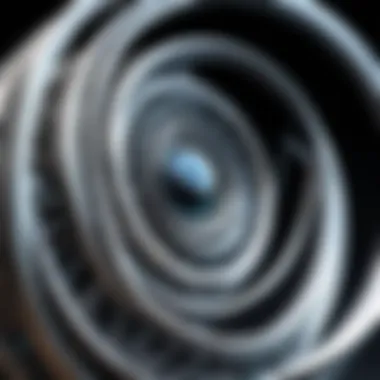
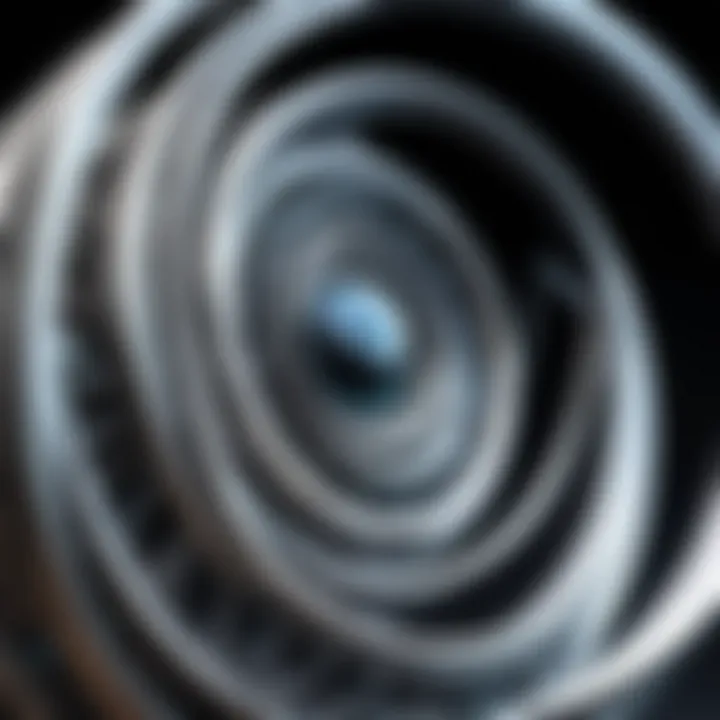
In summary, the integration of technology within motion sculpture is redefining both artist and viewer landscapes. Digital fabrication enhances creative possibilities while fostering a collaborative atmosphere where technology and art meet. As visitors engage with these kinetic installations, they find themselves at the intersection of technology and creativity, an exciting frontier that will undoubtedly evolve further.
"The beauty of motion sculpture lies not just in static beauty; it's about movement, interaction, and the experience of art in a dynamic form."
Interactive and tech-savvy approaches turn the act of viewing into a dialogue, enriching the audience's understanding and appreciation of art in a way that resonates deeply with contemporary society.
Cultural Significance of Motion Sculpture
Motion sculpture stands as a dynamic intersection where creativity meets technology. Its cultural significance cannot be understated; it acts as a narrative device that tells the story of human innovation and reflects societal changes. Through its ability to move and engage, motion sculpture offers a fresh lens through which we can examine contemporary life, promoting conversations around technology, art, and our place within both realms.
Art as a Reflection of Society
Kinetic art, with its ever-shifting forms, behaves like a mirror reflecting the pulse of society. The movement isn't just a physical characteristic; it encapsulates the fluidity of social dynamics and cultural shifts. For instance, when one considers the rapid pace of technological advancement today, motion sculptures capture that essence – a reminder that change is the only constant.
In some ways, motion sculptures highlight society’s desire for interaction and engagement. Instead of passively observing, viewers become participants, moving around the piece, adapting their perspectives. This engagement is a response to a culture yearning for connection, both with art and within community interactions.
"Art must be an integral part of our lives, stirring us to examine and adapt our environment," says art critic Jane Doe. Through kinetic forms, we’re encouraged to rethink the spaces we occupy and the technologies that shape our interactions.
Furthermore, as voices of dissent or celebration, these sculptures can serve as political commentary. Take, for example, works that ebb and flow with the wind or rely on human interaction to function, mirroring our ever-evolving global landscape, complete with its challenges and triumphs. By resonating with current issues, they foster dialogues not only about art but also about societal evolution.
Symbolism in Kinetic Art
Symbolism in motion sculpture constructs a visual language that transcends traditional boundaries. Just as a film can evoke emotions through cinematography, so too can these sculptures convey deeper meanings through their kinetic properties. The act of movement itself symbolizes progress, change, and the very act of life flowing forward.
Moreover, the use of materials in kinetic forms often carries its own symbolism. For instance, the use of recycled components in a kinetic sculpture can symbolize sustainability and a commentary on consumerism, urging viewers to ponder the footprints we leave behind on our planet.
- Recycled Materials: Represent the circular economy.
- Fluid Mechanics: Suggest adaptability in tumultuous times.
- Light and Shadow: Can play into themes of perception and reality.
Kinetic art, then, serves not just as visual delight but as a vessel for thought-provoking dialogue. The layers of meaning often draw from the artist’s intent, societal context, and audience interpretation, making the experience multifaceted. It beckons observers to engage not just with the piece itself but with the larger narratives of humanity, culture, and existence. Ultimately, in a world that sometimes feels static, motion sculptures present a vibrant testimony to our ongoing journey, reminding us that movement, in whatever form it may take, has the power to inspire and transform.
Motion Sculpture in Modern Art Exhibitions
Motion sculpture occupies a prominent position in contemporary art exhibitions, serving as a bridge between traditional artistry and the fast-paced, tech-savvy world we live in. It engages viewers not simply as passive observers but as active participants in the artwork, reshaping their experience and perception of art itself. By incorporating movement, these sculptures invite dialogue, encouraging audiences to engage with them on multiple levels.
One might think of motion sculptures as a way to breathe life into what might otherwise be considered static forms. This is particularly important as we navigate an era that increasingly values interaction and engagement. In this context, the significance of motion sculpture lies in its ability to challenge our preconceived notions of what art can be. Viewers no longer just look at an object; they become part of an ongoing dialogue where their movements can affect the sculpture's response, blurring the lines between creator and spectator.
Noteworthy Installations and Exhibits
Several installations around the world stand out in the realm of motion sculpture. For instance, the work of artist Kara Walker at the Los Angeles County Museum of Art features large kinetic installations that play with the idea of shadow and light, compelling audiences to move around and interact with her pieces. In a different vein, TeamLab, a collective of digital artists, showcases immersive environments in exhibitions that rely heavily on the integration of motion and viewer interaction. Their installations, such as **
Educational Aspects and Workshops
Educational initiatives centered around motion sculpture play a pivotal role in both art and technology realms. They tackle the complexities of integrating mechanisms with artistic expression, giving students a unique skill set that spans multiple disciplines. Here, we’ll explore why this education is not just important but essential in modern art.
Teaching Motion Sculpture Techniques
The foundation of any educational program focused on motion sculpture should include hands-on learning of various techniques. By exposing students to real-world applications, they can begin to grasp the technical elements essential for creating dynamic structures.
Courses may include:
- Introduction to Kinetics: Covering the basics of motion and mechanics, ensuring that students understand fundamental principles.
- Material Workshop: Exploring suitable materials like wood, metal, or plastics, students can see how each behaves and responds to movement.
- Mechanism Design: Engaging learners in designing their motion systems, emphasizing how mechanisms can translate artistic vision into reality.
As students take these courses, they not only gain artistic skills but also develop a solid grasp of engineering principles. It's a blend that equips them for various career paths in art, design, and technology.
Fostering Creativity in Young Artists
The goal of educational programs shouldn't stop at just teaching techniques; fostering creativity should also be a priority. Encouraging young artists to think outside the box can lead to innovations in motion sculpture that challenge conventional aesthetics.
Consider the following strategies for fostering creativity:
- Workshops with Artists: Inviting established motion sculptors to mentor students can inspire new perspectives and ignite passion.
- Collaborative Projects: Group projects can encourage teamwork and allow students to bounce ideas off one another, often resulting in unique creative solutions.
- Use of Digital Tools: Incorporating technology, like virtual simulations or 3D modeling, can help students visualize their ideas before constructing them physically.
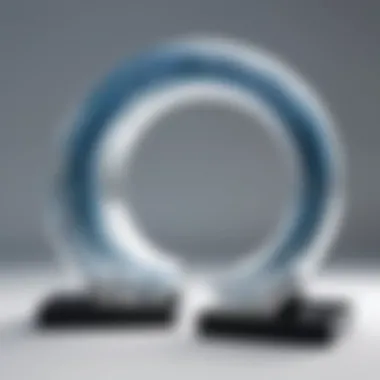
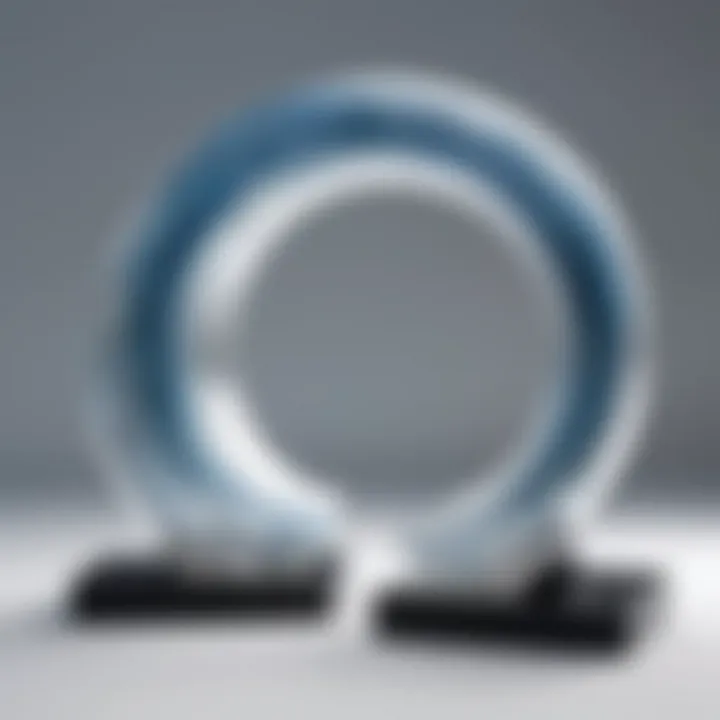
"Motion sculpture is not just about mechanics; it's about the poetry of movement and how it interacts with space and materials."
Combining these educational aspects not only enhances technical abilities but also ignites the imaginative spirit in young artists. This fusion ultimately prepares them to contribute meaningfully to the evolving field of motion sculpture.
Challenges and Criticisms
Motion sculpture, while a fascinating comparison of creativity and technology, is not without its share of challenges and criticisms. As more artists experiment with kinetic elements, various factors come into play that impact the creation, interpretation, and reception of these artworks. Understanding these challenges is essential for both artists and audiences to navigate this dynamic field more effectively.
The Balance Between Art and Engineering
The intersection of art and engineering in motion sculpture creates a unique platform for expression, but this also leads to tensions. On one hand, the engineering aspect can enhance the artwork's functionality, giving it the ability to move, interact, or respond to the surroundings.
On the other hand, an overemphasis on technical prowess might overshadow the artistic intent. Some critics argue that when the technological aspect takes center stage, the emotional and conceptual depth of the sculpture can be diluted. For instance, consider a large-scale kinetic installation that may dazzle with its mechanics but fails to engage the viewer on a personal level. This raises questions about where the line is drawn between a mere gadget display and a piece of genuine art.
In some cases, artists find themselves hedged in by the sheer complexity of engineering solutions. The necessity to ensure that each element works seamlessly together can lead to stress that hampers creativity. Thus, achieving a harmonious balance between artistic vision and technical capability can often feel like walking a tightrope.
Cultural Appropriation Concerns
Another significant challenge in the realm of motion sculpture is the issue of cultural appropriation. As artists draw inspiration from various cultures—for instance, incorporating traditional motifs or mechanics—it becomes crucial to tread carefully. The fine line between cultural appreciation and appropriation can easily blur, leading to backlash from communities whose heritage may be represented in the artwork.
When motion sculptures reference cultural symbols or incorporate techniques rooted in specific traditions, some may perceive such actions as exploitative, particularly when the artist does not share that cultural background. This aspect can stir up feelings of anger and resentment within affected communities. Moreover, critics often argue that such artistic choices can trivialize deeply meaningful heritage elements, reducing them to mere aesthetic motifs for sensationalism.
It's a delicate dance. Artists must engage in extensive research and genuine dialogue to appreciate the origins and meanings behind the elements they wish to incorporate. Understanding the cultural significance of an element can transform a piece from being a mere visual spectacle to something more profound and respectful. By doing so, the artist opens up avenues for collaboration and richer narratives that honor the roots of the art form.
"Motion sculpture embodies not just the fusion of mechanics and aesthetics, but also reflections of the complexities we must acknowledge in our artistic pursuits."
The Future of Motion Sculpture
Motion sculpture has always held a certain allure; it combines creativity and movement, a dance between artistic expression and mechanics. As we look to the future of motion sculpture, we see the potential for extraordinary growth and development. This isn't just about the physical pieces but a deeper exploration into how art and technology intertwine. With advancing digital technologies and innovative materials, the canvas has shifted to include dynamic interactions that challenge our understanding of both art and audience engagement.
One significant aspect to consider is how emerging technologies can enhance the artistry and functionality of motion sculptures. Artists are now able to incorporate software, sensors, and automation, resulting in pieces that respond to their environment or even to human interaction. The idea of interactivity isn't just a gimmick; it leads to a richer experience, prompting viewers to engage more actively with the artwork.
Integration with Emerging Technologies
Emerging technologies like robotics, artificial intelligence, and interactive digital displays are transforming the landscape of motion sculpture. Artists can design intricate systems where components can move in unexpected ways, controlled by algorithms that create a digital heartbeat within a physical body.
- Robotics: Artists harness robotic arms or drones to create kinetic art that can evolve and adapt. A project where robotic arms craft delicate arrangements, shifting forms based on viewer proximity, stands as an example of physical and digital integration.
- Artificial Intelligence: AI can analyze viewer behavior, adjusting the art’s performance based on real-time data. For instance, a sculpture might change its motion or color depending on the emotions detected in the audience’s expressions.
- Digital Interactive Installations: Utilizing screens or projections, artists can add layers of visual content that morph in response to sounds, movement, or even temperature. This opens a portal to what’s possible, allowing for an immersive experience that’s both physical and digital.
By weaving these technologies into motion sculptures, artists not only push boundaries but also invite audiences into a collaborative experience with the art itself.
Predictions for the Evolution of the Form
Looking ahead, predictions abound regarding how motion sculpture will continue to evolve. One critical element is the increasing accessibility of technology. As tools and frameworks for creating motion sculptures become available to a wider audience—especially with the rise of 3D printing and DIY robotics—we can expect a renaissance in individual artistic expression.
- Wider Artist Participation: With tools such as open-source robotics kits, artists without formal training in engineering can now explore kinetic art forms. This democratization of technology may lead to a surge of new voices and ideas in the realm of motion sculpture.
- Convergence with Other Art Forms: Motion sculpture may also merge with fields such as theater, dance, and installation art. For instance, choreographed performances alongside kinetic sculptures could enhance narrative storytelling, adding a significant dimension to both art forms.
- Sustainability and Eco-friendly Innovations: As awareness of environmental concerns grows, artists may turn to sustainable materials and energy-efficient systems. Sculpture made from recycled materials that harness solar power for movement could become a norm rather than an exception.
"The evolution of motion sculpture reflects our own journey as creators and spectators in an increasingly complex world, where interaction reigns and boundaries dissolve."
In summary, the future of motion sculpture is not just about moving parts; it's about integrating art with technology in meaningful ways. The fusion of kinetic elements with emerging technologies presents a thrilling horizon, where awe-inspiring works become not just to behold but to participate in.
Culmination: The Enduring Appeal of Motion Sculpture
In the realm of contemporary art, motion sculpture occupies a unique space, blending creativity and technology in ways that often challenge traditional perceptions. This intersection becomes particularly significant as artists continue to push boundaries, working with various mediums to create experiences that resonate on multiple levels. The importance of motion sculpture can't be understated; it invites viewers to engage with art in a dynamic manner, transforming the act of observation into a participatory experience.
Motion sculpture stands as a testament to innovation and experimentation. It invites not only admiration for the intricate details and technologies employed but also a deeper reflection on how movement can alter our understanding of space and form. This sculptural approach breaks away from static representation, encouraging interactions that can elicit joy, curiosity, or perhaps contemplation. It’s art that breathes, that sways and shifts, encapsulating not just beauty but the essence of time.
As we dive into key elements surrounding the significance of motion sculpture, several benefits emerge:
- Enhanced Viewer Engagement: Unlike static art forms, motion sculptures captivate attention through continuous change, keeping the viewer’s interest alive.
- Integration of Technology: The incorporation of mechanical and digital elements not only redefines artistry but also showcases the advancements in technology, appealing to tech-savvy individuals seeking new experiences.
- Narrative Depth: Motion often adds layers to the story that a static piece may not convey. Each movement can represent different ideas or emotional narratives, engaging audiences at deeper levels.
"Art is not a passive experience, and when combined with movement, it becomes a thrilling dialogue between the work and the viewer."
Key Takeaways
- Motion sculpture reshapes the viewer's role from passive observer to active participant.
- It embodies a fusion of creativity, technology, and engineering principles, appealing to a modern audience.
- The interplay of movement and form provides an expansive platform for expression and narrative.
Invitation for Further Exploration
For those intrigued by the multilayered dimensions of motion sculpture, further exploration beckons. Visiting galleries that feature kinetic art installations can provide firsthand experience of these works in action. Engage with online communities on platforms like Reddit, where discussions surrounding technology and art flourish. You might consider attending workshops or lectures that highlight motion sculpture techniques, or diving into literature that dives deeper into the philosophy behind this captivating intersection of art and mechanics.







